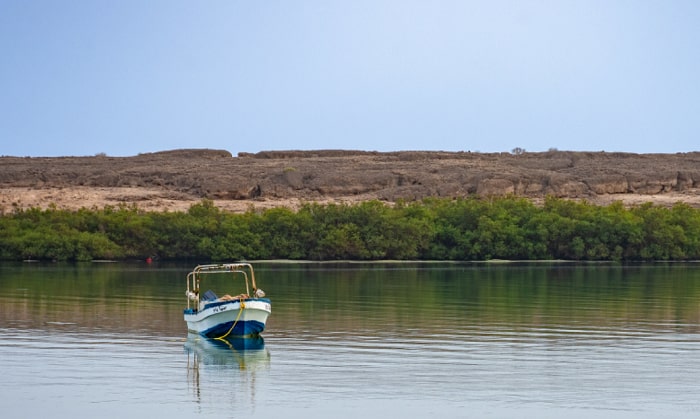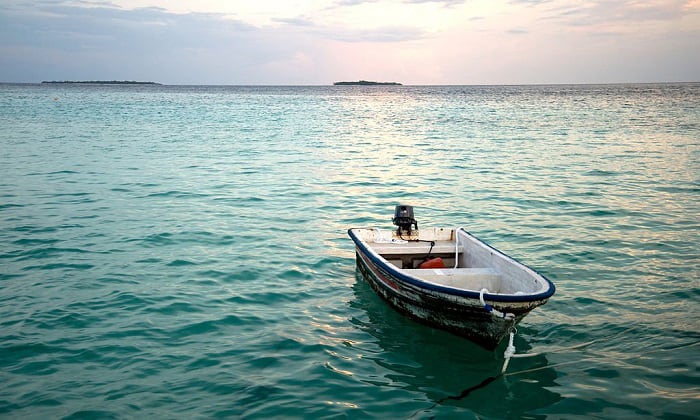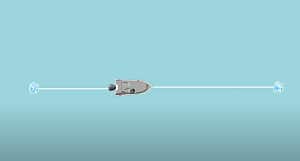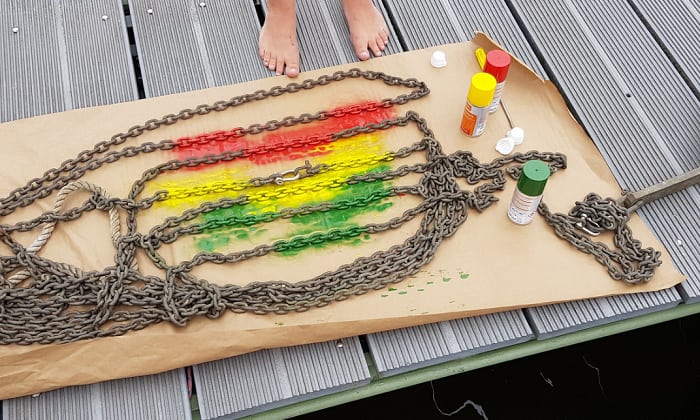Anchoring is an important part of boating that is used in a variety of situations. However, the process may differ depending on the needs of each situation. Not being able to properly adapt our anchoring can lead to problems.
In this article, we’ll go over the proper procedure for setting the anchor and how to anchor a boat in a lake. We’ll also include essential information about choosing the right tools.
Keep reading to learn more.
Table of Contents
What You Need
- Anchor
- Rode
- Cleats (for tying the line)
- Windlass (optional)
- Movement detection electronics such as GPS (optional)
Anchor Use
Using an anchor is important in many situations. From keeping the boat secure during turbulent weather to stationing it for downtime on the water, anchoring is an important aspect of boating that enables us to expand our boating repertoire.
However, proper technique for anchoring is very important because improper methods can cause problems that can potentially put us and the boat in danger. The anchor must be stable to anchor a boat overnight.
Setting An Anchor
To use an anchor, our equipment should be ready for use before setting out. Always check that the anchor, the rode, your cleats, and even mechanisms for using the anchor are in proper working condition.
You don’t need to have special equipment to use an anchor, but when you anchor a boat with a windlass and use boating electronics, the process can be easier.
1. Ease the boat into position
Determining the proper anchor spot is the important first step. It’s best to research the waters you’ll be sailing in, including the type of water bed for choosing your anchor.
Make use of electronics if you have them to determine a suitable anchoring spot and ensure that the boat’s bow is facing against the current.
Approach the anchoring spot slowly and control your engine output appropriately. Bring the boat to a stop and prepare the anchor for deployment.
2. Drop the anchor
Drop the anchor and check that it is securely connected to the boat. Ease the line into the water, but don’t drop the entire length right away. It is recommended to thread the line by hand; this will also ensure that the line does not tangle up.
3. Back the boat with the current
If the current is strong, the boat will drift along with it and you should allow the line to extend and tighten. You can also help the boat along by running the engine at a low output in reverse. However, be careful and ensure that there is not too much momentum.
Once the line has extended and tightened, secure it properly.
4. Check that the boat is stable
Now you need to ensure that the boat is stable and is not dragging. This means that the boat is properly held in place by the anchor. If you have a motion sensor, it becomes easier to determine any movement of the boat.
If the boat is securely held in place, you’re done. But if it is dragging, you’ll need to set the anchor again.
Double Anchoring
When you anchor a boat for fishing in a lake, standard anchoring may not be sufficient, especially when there are strong winds. This is where a setup with two anchors is useful.
How To Double Anchor To Stop Boat Swinging At Anchor
Step 1: Set anchor normally
The process for setting the first anchor is the same. The difference usually comes after deploying the first anchor.
Step 2: Back the boat and extend the line
After setting the first anchor in a lake, you will need to use propulsion to back the boat. As with setting the anchor normally, keep your engine output low and slowly back the boat. Keep backing until reaching the spot for deploying the second anchor.
Step 3: Drop the second anchor from the stern
Once you reach the spot for the second anchor, deploy the second anchor. Ease the line into the water as you did with the first anchor.
Step 4: Position the boat between both anchors
Go back to the first anchor’s line and pull it to move the boat into position. The proper place for the boat is the midpoint between the two anchors. Once you reach the proper place, pull the line on the boat until the line tightens and tie it to the boat.
Do the same for the anchor line at the stern. Remember to properly check for drag and stability.
Additional Details And Anchor Tips
Aside from knowing the steps for anchoring a boat in a lake, choosing the right boat anchor setup is also important.
Below are some additional details to keep in mind.
1. Choosing an anchor
There are many different types of anchors with different shapes and sizes. Each type is used for different kinds of situations. Below are some of the common types of anchors and a breakdown of the situation where they are best suited.
For anchoring in a lake, choose anchors more suited for soft ground.
- Lightweight
This type of anchor is used mainly for small boats due to its weight. It is designed to prevent clogging when used on grounds that are muddy or grassy.
- Navy
This is the traditional anchor that is popularly depicted in different media. It is best used for a harder ground but not good in loose mud or sand where it is not able to dig in properly.
- Plow
This type of anchor is a popular choice due to having a good hold on a wide variety of ground types. However, it needs to be pulled to set. It is not a good choice for soft ground or mud.
- Claw
A lighter alternative to the plow, this type of anchor works similarly and on the same types of surfaces. The difference is that this sets in more easily at the expense of holding power.
- Mushroom
Named because of its appearance, this type of anchor works best on soft ground.
2. Choosing anchor rode
The proper name for the anchor’s line is rode. There are different types of anchor rode with variations in size and material. The rode we need changes depending on our preferences and needs, but the boat also factors into this choice.
The rode’s thickness should be an eighth of an inch per 9 feet of the boat’s length. This means that a 20-foot boat should have an anchor line that is around a third of an inch thick.
For the length, there should be 8 feet of line for every foot of water depth. That means an anchoring depth of 20 feet would need 160 feet of rode.
Conclusion
Now you know how to properly anchor a boat, along with other important considerations to adapt to different situations. You’re now also familiar with double anchoring and when to use it. Just be sure to always heed local boat anchoring rules.
If you know anyone else asking how to anchor a boat in a lake, please share this article with them as well. Drop your comments and suggestions below, we’d love to hear from you.
Remember to boat safely.

“My intention from the first day establishing Boating Basics Online is to provide as much help as possible for boaters who want to experience a first safe and convenient trip. So feel free to join us and share your beautiful journeys to the sea!”




